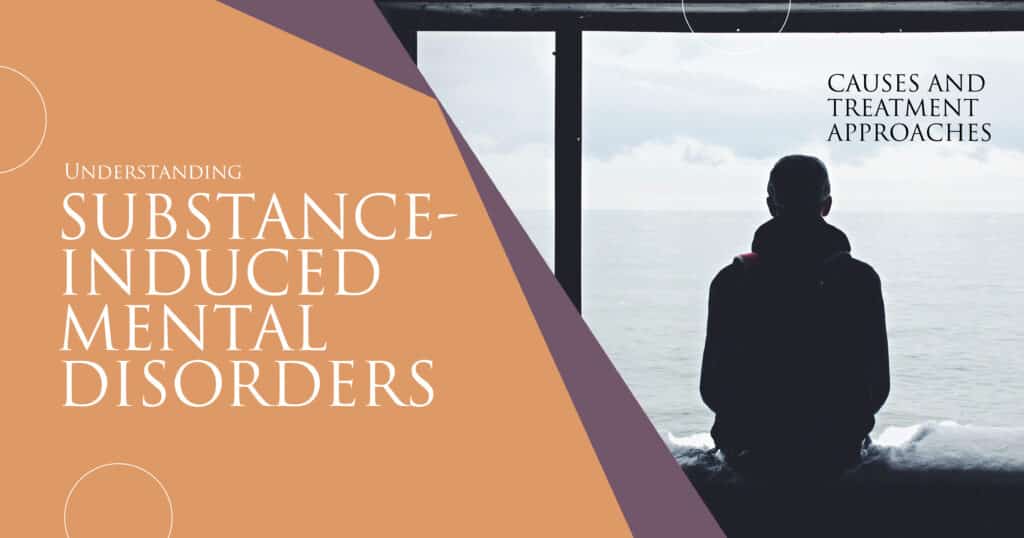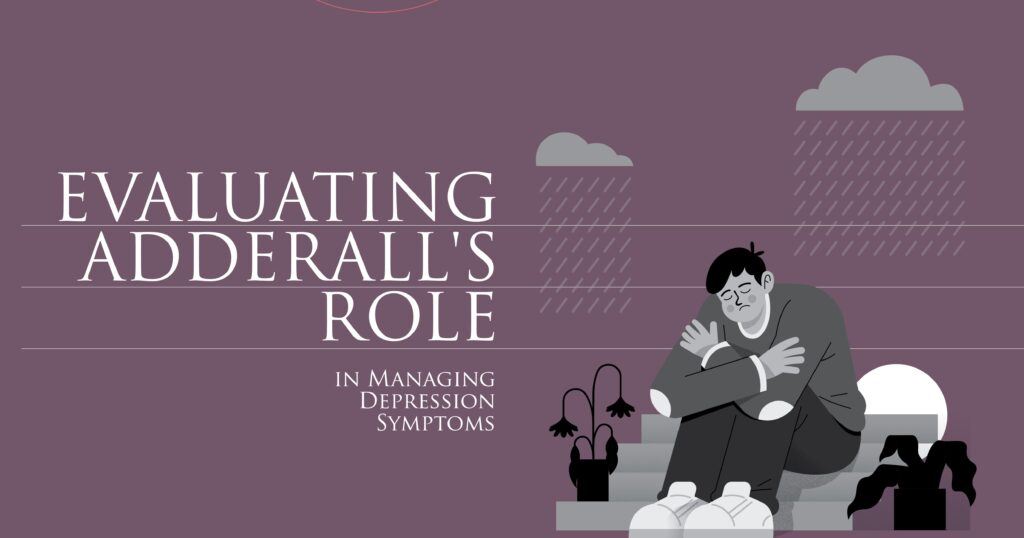Substance-induced mental disorders occur when the use of drugs, alcohol, or other substances leads to the development or exacerbation of mental health conditions. These substance-induced disorders can be temporary or persist beyond the period of time of substance use. Essentially, they are a direct result of the substance’s effects on the brain, altering mood, cognition, and behavior in ways that can mimic or worsen existing mental illnesses.
Imagine you’re enjoying a night out, and after a few drinks, you start feeling unusually anxious or depressed. While it might seem like a fleeting reaction, repeated substance use can lead to more profound and persistent mental health issues. The impact of psychoactive substances on mental health can be complex, involving everything from temporary mood swings to long-lasting psychological conditions.
Common symptoms include substance-induced anxiety disorders and substance-induced depressive disorders, which can often result in significant distress and impairment. Understanding the risk for psychosis associated with substances such as alcohol, stimulants, and opioids is critical for effective intervention.
Essential Takeaways
Substance-Induced Mental Disorders Can Mimic or Exacerbate Existing Conditions: Substances such as alcohol, stimulants, and opioids can lead to mental health disorders that may resemble or worsen pre-existing conditions. For example, substance-induced bipolar disorder may occur in individuals with a history of mood disorders. Recognizing the link between substance use and mental health symptoms is crucial for accurate diagnosis and effective treatment.

Integrated Treatment Approaches Are Key: Effective treatment for substance-induced mental disorders requires a holistic approach that addresses both substance use and mental health symptoms simultaneously. Integrated treatment plans, including detoxification, therapy, and support services, offer the best chance for recovery and long-term stability. Patients with schizophrenia, for instance, may require specialized approaches due to the development of schizophrenia following substance abuse.
Lifestyle and Support Networks Are Vital for Recovery: Making positive lifestyle changes and building a supportive network are essential for managing substance-induced mental disorders. Healthy habits, stress management, and participation in support groups provide valuable tools and resources that aid in recovery and improve overall mental health.
Overview of Common Substances Involved
Several types of substances are commonly linked to mental health disorders. Here’s a brief overview of how they affect the brain:
- Alcohol: Often used socially, alcohol can depress the central nervous system. Excessive drinking can lead to mood disorders such as substance-induced depression and anxiety disorders. Long-term abuse can also result in cognitive impairments and sleep disorders.
- Stimulants: Drugs like cocaine and methamphetamine increase dopamine levels in the brain, leading to heightened mood and energy levels. However, chronic use can cause auditory hallucinations, paranoia, visual hallucinations, and severe anxiety. Crystal methamphetamine in particular is notorious for its acute effects.
- Opioids: Prescription painkillers and illegal opioids like heroin can alter brain function, leading to symptoms of depression, anxiety, and cognitive deficits. Those with an opioid use disorder are especially vulnerable to developing substance-induced mood disorders.
- Benzodiazepines: These medications are prescribed for anxiety and insomnia but can cause cognitive impairment, memory problems, and emotional numbness when abused. The acute withdrawal from these substances can exacerbate underlying mental health conditions.
Understanding how these substances of abuse impact mental health is crucial for effective treatment and management.
San Jose Mental Health
Causes of Substance-Induced Mental Disorders
How Substance Use Affects the Brain: Substances can drastically alter brain chemistry and function. Different substances affect neurotransmitters—chemicals that transmit signals in the brain—differently. For example, stimulants increase the release of dopamine, leading to euphoric feelings but can also cause intense paranoia and anxiety. On the other hand, depressants like alcohol slow down brain activity, which can lead to mood swings and cognitive impairment.
When substances are used frequently, they can cause structural changes in the brain, such as reduced volume in certain areas or impaired connectivity between regions. These changes can result in symptoms that resemble or trigger mental health disorders, including psychiatric disorders like schizoaffective disorder.
Factors Contributing to Substance-Induced Mental Disorders: Several factors contribute to the development of substance-induced mental disorders:
- Genetic Predisposition: Some individuals may be genetically predisposed to both substance use disorders and mental health conditions. Genetic factors can influence how a person responds to substances and their susceptibility to developing mental illnesses.
- Environmental Factors: Stressful life events, trauma, and exposure to substance use in the family can increase the risk of developing substance-induced mental disorders. The environment plays a significant role in shaping behaviors and mental health outcomes.
- Pre-Existing Mental Health Conditions: Individuals with a history of mental health issues may be more vulnerable to substance-induced disorders. Substance use can exacerbate symptoms of conditions like depression and anxiety, leading to a cycle of substance abuse and worsening mental health disorders.
Understanding these contributing factors helps in addressing the root causes of substance-induced mental disorders and tailoring treatment approaches accordingly.
Common Types of Substance-Induced Mental Disorders
Substance-Induced Psychotic Disorders: Substance-induced psychotic disorders involve symptoms such as hallucinations, delusions, and severe paranoia, often triggered by the use of substances like stimulants or hallucinogens. For instance, a person under the influence of methamphetamine might experience intense paranoia and hallucinations, leading to behaviors that are markedly out of character. These disorders can be temporary, resolving once the substance is cleared from the system. However, chronic use can lead to persistent psychosis, which can be challenging to differentiate from primary psychotic disorders like schizophrenia. Symptoms may include auditory hallucinations and delusional disorder, with paranoid delusions being common in amphetamine-induced psychosis.
Substance-Induced Mood Disorders: Mood disorders related to substance use include depression and mania. For example, someone who abuses alcohol might experience severe depressive episodes, while stimulant use could lead to manic or euphoric states. Substance-induced depressive disorder may manifest in symptoms of severe depression, significantly impacting daily functioning, relationships, and overall quality of life. It’s essential to differentiate between mood disorders caused by substance use and those that occur independently, as treatment approaches may vary.

Substance-Induced Anxiety Disorders: Substance-induced anxiety disorders involve symptoms such as panic attacks, generalized anxiety, and specific phobias. Substances like caffeine, stimulants, and even withdrawal from sedatives can exacerbate anxiety symptoms. Understanding the relationship between substance use and anxiety helps in developing effective treatment strategies, especially considering the withdrawal symptoms associated with some substances.
Cognitive Impairments Due to Substance Use: Chronic substance use can lead to cognitive impairments, including memory issues, impaired judgment, and difficulties with executive functioning. For example, heavy alcohol use can result in persistent cognitive deficits, affecting a person’s ability to plan, organize, and make decisions. Patients with substance abuse histories often face adverse effects on their cognitive function, making it crucial to address both the substance use and cognitive issues in treatment.
Diagnosis of Substance-Induced Mental Disorders
Recognizing Symptoms and Seeking Help: Recognizing the symptoms of substance-induced mental disorders is the first step toward seeking help. Symptoms may vary based on the substance used and the type of mental disorder. Observing changes in mood, behavior, or cognitive function can indicate the need for professional evaluation. Symptoms of depression and anxiety disorders should be closely monitored.
Seeking help from a mental health professional is crucial for accurate diagnosis and appropriate treatment. Early intervention can improve outcomes and prevent the escalation of symptoms.
Diagnostic Criteria and Tools: Diagnosis of substance-induced mental disorders involves criteria from diagnostic manuals like the DSM-5 (Diagnostic and Statistical Manual of Mental Disorders) or ICD-10 (International Classification of Diseases). Tools used for diagnosis include:
- Clinical Interviews: Detailed interviews with patients to understand their substance use history and mental health symptoms.
- Substance Use Assessments: Evaluations to determine the type, frequency, and impact of substance use.
- Psychological Testing: Tests to assess cognitive function and mental health symptoms.
Accurate diagnosis is essential for developing a targeted treatment plan and addressing both the substance use and mental health aspects.
San Jose Mental Health
Treatment Approaches for Substance-Induced Mental Disorders
Medical and Pharmacological Treatments: Treatment for substance-induced mental disorders often involves a combination of medical and pharmacological approaches. Medications may be prescribed to manage symptoms, such as antidepressants for depression or antipsychotics for psychotic symptoms. Detoxification may also be necessary to safely manage withdrawal and reduce substance-related symptoms.
Psychotherapy and Counseling: Psychotherapy is a critical component of treatment for substance-induced mental disorders. Approaches such as cognitive-behavioral therapy (CBT) can help individuals address harmful thought patterns and behaviors related to substance use. Motivational interviewing can enhance motivation for change, while contingency management provides incentives for positive behavior. Counseling and therapy also help individuals develop coping strategies, improve emotional regulation, and address underlying issues contributing to substance use.
Integrated Treatment for Co-Occurring Disorders: Integrated treatment involves addressing both substance use and mental health disorders simultaneously. This approach ensures that all aspects of an individual’s health are considered and managed effectively. Comorbid substance use disorders may require tailored strategies to address both conditions and promote recovery. Programs that incorporate therapy, support groups, and lifestyle changes can lead to improved outcomes for individuals with substance-induced mental disorders.
Support Groups and Peer Support: Support groups provide a safe space for individuals to share experiences and connect with others facing similar challenges. Peer support can enhance motivation and accountability, fostering a sense of community and understanding.

Coping Strategies for Individuals
Coping with substance-induced mental disorders requires a multifaceted approach that involves self-care, lifestyle changes, and a strong support network. Here are some effective coping strategies:
- Establish Healthy Routines: Developing a structured daily routine can provide stability and help manage symptoms. This includes regular sleep patterns, balanced nutrition, and consistent physical activity.
- Practice Mindfulness and Relaxation Techniques: Mindfulness meditation, deep breathing exercises, and yoga can help reduce anxiety and improve overall mental health. These techniques promote self-awareness and emotional regulation.
- Build a Support Network: Surrounding yourself with supportive friends and family members is crucial for recovery. Joining support groups can also provide valuable connections and shared experiences.
- Set Realistic Goals: Setting achievable short-term goals can help individuals maintain motivation and track progress. Celebrate small victories to build confidence and resilience.
Conclusion
Substance-induced mental disorders present a significant challenge for individuals struggling with both substance use and mental health issues. Understanding the relationship between substance use and mental health is essential for effective diagnosis and treatment. Early intervention, integrated treatment approaches, and strong support systems can facilitate recovery and improve overall quality of life.
By recognizing the signs and seeking help, individuals can take proactive steps toward healing and achieving lasting wellness.
San Jose Mental Health
FAQs
1. What are the most common substances that lead to mental health disorders?
Common substances that can lead to mental health disorders include alcohol, stimulants (such as cocaine and methamphetamine), opioids (like heroin and prescription painkillers), benzodiazepines, and hallucinogens. Each of these substances affects the brain differently and can result in a variety of mental health issues, ranging from anxiety and depression to psychosis and cognitive impairments.
2. How can you tell if a mental health disorder is substance-induced?
Determining if a mental health disorder is substance-induced involves assessing whether the symptoms appear in relation to substance use. Symptoms should be evaluated to see if they began or worsened with substance use, and whether they resolve once the substance is discontinued. A comprehensive evaluation by a mental health professional, including clinical interviews and substance use assessments, is necessary for accurate diagnosis.
3. Can substance-induced mental disorders be treated effectively?
Yes, substance-induced mental disorders can be treated effectively with a combination of medical, pharmacological, and psychotherapeutic approaches. Treatment typically involves addressing both the substance use and the resulting mental health symptoms. Integrated treatment plans that include detoxification, therapy, and support services are essential for recovery and long-term management.
4. What role do support groups play in recovery from substance-induced mental disorders?
Support groups play a crucial role in recovery by providing peer support, encouragement, and accountability. Groups such as Alcoholics Anonymous (AA) or Narcotics Anonymous (NA) offer a sense of community and shared experience, which can be instrumental in maintaining sobriety and managing mental health symptoms. Support groups also provide practical advice and coping strategies from individuals who have faced similar challenges.
5. How can lifestyle changes contribute to managing substance-induced mental disorders?
Lifestyle changes can significantly contribute to managing substance-induced mental disorders by promoting overall well-being. Regular physical activity, a balanced diet, adequate sleep, and stress management techniques like mindfulness and relaxation can support mental health and aid in recovery. Adopting healthy habits helps stabilize mood and improve cognitive function, complementing other treatment approaches.








